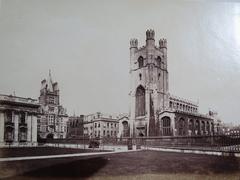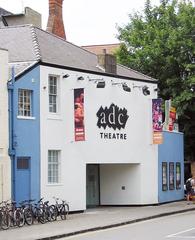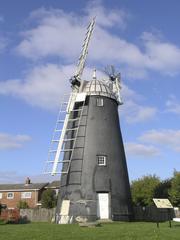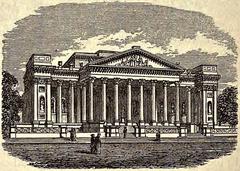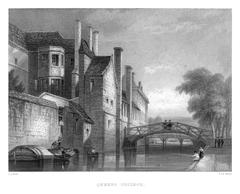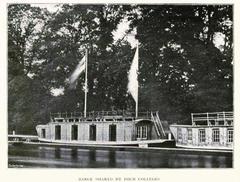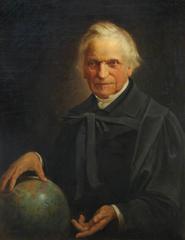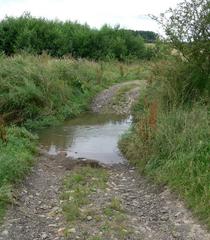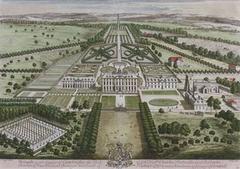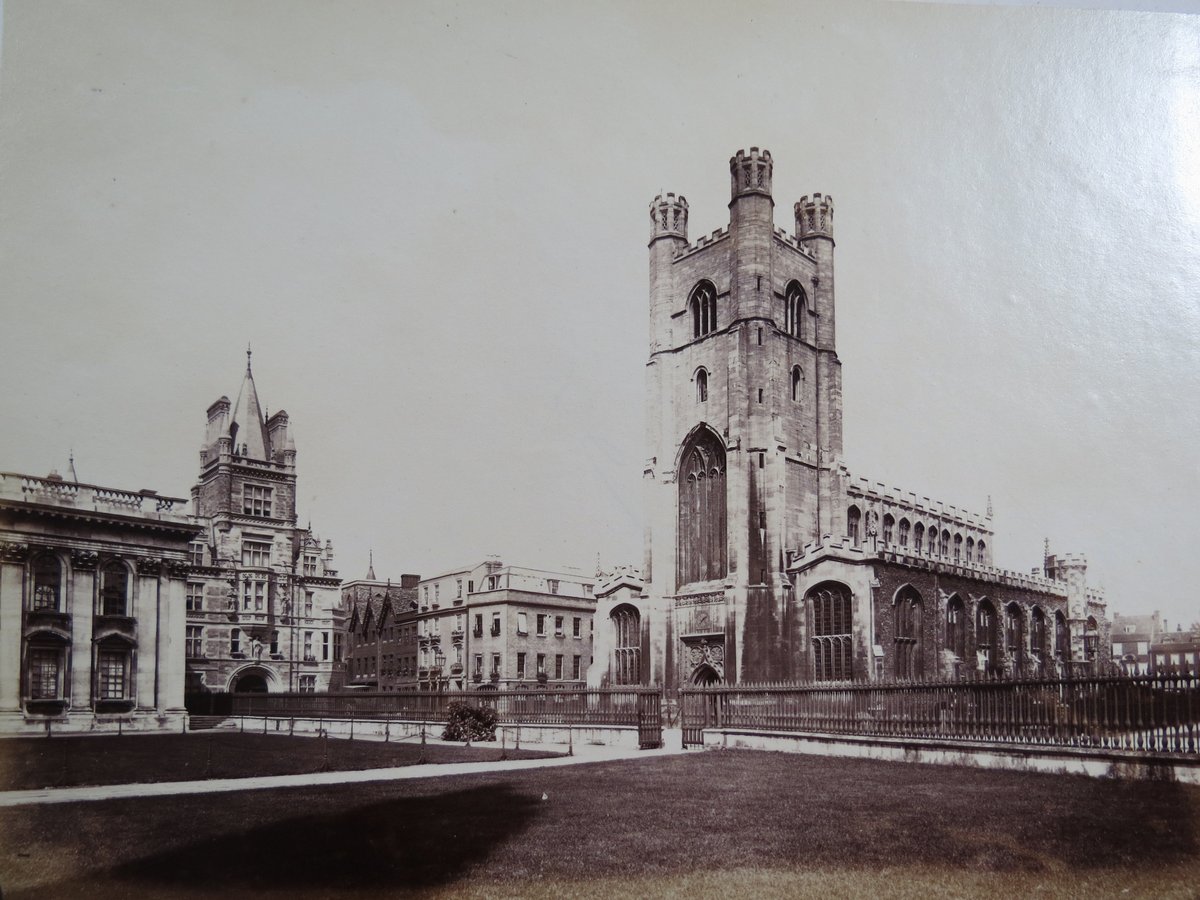
Church of St Mary the Great, Cambridge: Visiting Hours, Tickets, and Historical Significance
Date: 14/06/2025
Introduction
The Church of St Mary the Great—widely known as Great St Mary’s—is a landmark at the very heart of Cambridge, symbolizing the city’s centuries-old fusion of academic, religious, and civic life. Serving as the University Church since 1209, its history stretches back even further, with origins possibly as early as 1010. Over the centuries, Great St Mary’s has witnessed and shaped pivotal moments in Cambridge’s story, making it an essential destination for visitors seeking to immerse themselves in the city’s heritage, architecture, and vibrant community. Today, the church offers not only a place of worship and reflection but also an exceptional vantage point over Cambridge’s historic skyline and a venue for cultural and academic events.
For comprehensive visitor information, including academic heritage and architectural highlights, see the official Great St Mary’s website, placestovisitinengland.com, and cam.ac.uk.
Table of Contents
- Introduction
- Early Origins and Historical Foundations
- Destruction, Rebuilding, and Architectural Evolution
- University Church: Academic and Civic Importance
- Notable Events and Historical Figures
- Key Architectural and Artistic Features
- Visiting Information: Hours, Tickets, and Accessibility
- Guided Tours, Events, and Visitor Tips
- Nearby Attractions
- Frequently Asked Questions (FAQ)
- Conclusion
- References
Early Origins and Historical Foundations
The Church of St Mary the Great is documented as early as 1205, though local tradition hints at origins dating to 1010 (placestovisitinengland.com). Its proximity to the city’s marketplace established it as a focal point for religious and civic life. In 1209, scholars fleeing Oxford unrest chose St Mary’s as their meeting place, solidifying its role as the University Church and embedding it in the academic fabric of Cambridge (greatstmarys.org; cam.ac.uk).
Destruction, Rebuilding, and Architectural Evolution
A fire in 1291 devastated the original structure. Rebuilding efforts began soon after, with the chancel reconsecrated in 1351. By the late 15th century, Cambridge’s growing academic population prompted a major expansion, supported by influential benefactors including Richard, Duke of Gloucester (later Richard III). Construction milestones include:
- Tower Construction: Begun in 1491, completed in 1606, the 35-meter tower remains a defining feature (placestovisitinengland.com).
- Restorations: Significant works in the 18th century by James Essex and in the 19th century by Sir George Gilbert Scott and Anthony Salvin.
- Architectural Style: The church exemplifies Perpendicular Gothic architecture, marked by tall arcades, clerestory windows, and intricate stonework.
The church is a Grade I listed building, recognized for its architectural and historic value (Historic England).
University Church: Academic and Civic Importance
Great St Mary’s has long been the ceremonial and spiritual center of the University of Cambridge. It hosted lectures, meetings, and graduations until 1730 and remains the official reference point from which all distances in Cambridge are measured (cam.ac.uk). The church continues to host university sermons, academic ceremonies, and major civic celebrations, embodying the city’s ongoing tradition of intellectual and public discourse.
Notable Events and Historical Figures
Throughout its history, Great St Mary’s has been the setting for significant events:
- 1381 Peasants’ Revolt: Townspeople stormed the church, burning the University’s chest (cam.ac.uk).
- Royal Patronage: Henry VII donated timber for the roof; Elizabeth I delivered a Latin oration; James I ordered the removal of the church gallery; Mary I presided over the exhumation and burning of Martin Bucer’s remains (greatstmarys.org).
- Reformation and Civil War: The church’s fortunes reflected the religious and political upheavals of the Reformation and the English Civil War, with both town and gown involved in national debates.
Key Architectural and Artistic Features
- Tower and Bells: The 35-meter tower offers panoramic views of Cambridge. The bell chamber contains 13 bells, recast in 2009 for the university’s 800th anniversary (placestovisitinengland.com).
- Organs: Two historic organs play a central role in the church’s musical life (Exploring Cambridge).
- Stained Glass and Memorials: Victorian stained glass windows and numerous memorials commemorate historical figures and benefactors.
- Interior Features: Notable Jacobean font (1632), restored 15th-century woodwork, and rare 18th-century nave galleries (Historic England).
- University Clock: Installed in 1577, its “Cambridge Quarters” inspired the chimes of Big Ben (Wikipedia).
Visiting Information: Hours, Tickets, and Accessibility
Opening Hours
- Monday–Saturday: 10:00 am – 5:00 pm
- Sunday: 12:00 pm – 5:00 pm
- Check for seasonal changes or special closures on the official website.
Admission and Tower Tickets
- Church Entry: Free; donations are encouraged.
- Tower Climb: A modest fee applies (£5 adults, £3 students/seniors, free for children under 12). Tickets are available on-site or online.
Accessibility
- Wheelchair Access: The main entrance and nave are accessible; accessible toilets available.
- Tower: Not suitable for those with mobility challenges due to 123 spiral steps.
Facilities
- Gift Shop: Souvenirs, books, and tower tickets.
- Nearby Café: Michaelhouse Café serves refreshments (Michaelhouse Café).
- Restrooms: Accessible facilities on site.
(National Churches Trust; See Around Britain)
Guided Tours, Events, and Visitor Tips
- Guided Tours: Available seasonally and for groups by prior arrangement. Contact the church office to book (Great St Mary’s Contact).
- Events: Regular concerts, university sermons, and special ceremonies. Check the events calendar.
- Photography: Permitted, except during services and events.
- Best Times to Visit: Weekday mornings or outside university term times for a quieter experience.
- Duration: Allow 45–60 minutes for a standard visit; longer if attending events or tours.
Nearby Attractions
- King’s College Chapel
- Senate House
- Market Square
- Fitzwilliam Museum
- Cambridge University Colleges
For more, see placestovisitinengland.com.
Frequently Asked Questions (FAQ)
Q: Is there an admission fee?
A: Entry to the church is free; the tower climb requires a ticket.
Q: Are guided tours available?
A: Yes, for groups and during certain seasons—check with the church office.
Q: Is the church accessible for those with disabilities?
A: The main areas are accessible; the tower is not.
Q: Can I take photographs?
A: Yes, except during services and special events.
Q: When is the church busiest?
A: University term times and weekends are busiest; visit on weekday mornings for fewer crowds.
Conclusion
Great St Mary’s Church is not only a masterpiece of English Gothic architecture but also a living center of academic, religious, and civic life in Cambridge. Its storied past—marked by royal patronage, academic milestones, and resilient rebuilding—reflects the dynamism of both Cambridge and its renowned university. Whether you are climbing the historic tower, attending a concert, or quietly admiring the stained glass, Great St Mary’s invites you to engage with the city’s enduring spirit.
Before your visit, consult the official website for up-to-date information on opening hours, tickets, and events. Enhance your Cambridge experience with nearby attractions and resources such as the Audiala app for audio tours and exclusive content.
References
- Great St Mary’s Cambridge Visiting Guide: History, Hours, Tickets & More, 2025, Placestovisitinengland.com (placestovisitinengland.com)
- Great St Mary’s Church Cambridge: Visiting Hours, Tickets & Architectural Highlights, 2025, Greatstmarys.org (greatstmarys.org)
- Visiting Great St Mary’s Church: Academic Heritage, Cultural Events, and Visitor Information in Cambridge, 2025, Greatstmarys.org (greatstmarys.org)
- Visitor Information and Tips, 2025, National Churches Trust (nationalchurchestrust.org)
- Cambridge University Public Engagement: Spotlight on Great St Mary’s Church, 2025, Cam.ac.uk (cam.ac.uk)
